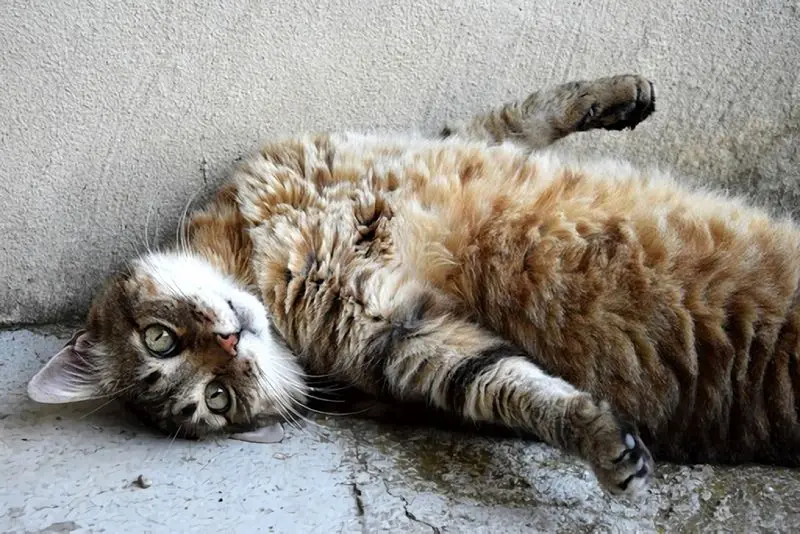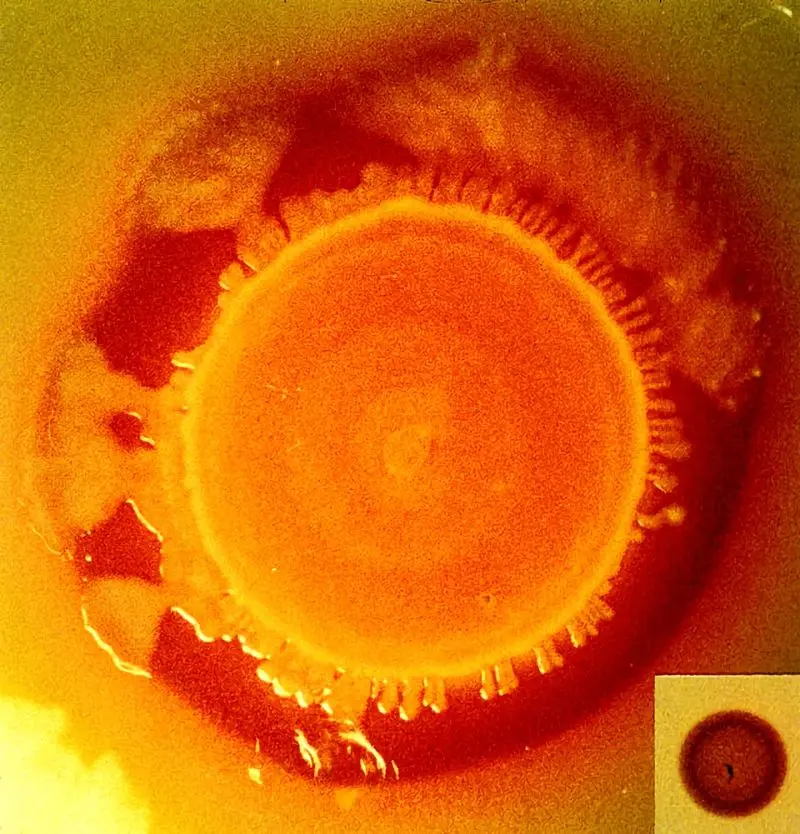 The part of a horseshoe nail visible on the outside of a shod horse's hoof. This part of the nail is folded down against the hoof to form a clamp, and normally has to be straightened or removed before the horseshoe can be pulled off without doing damage to the hoof. a.k.a: Clench.... ↪ Read more
The part of a horseshoe nail visible on the outside of a shod horse's hoof. This part of the nail is folded down against the hoof to form a clamp, and normally has to be straightened or removed before the horseshoe can be pulled off without doing damage to the hoof. a.k.a: Clench.... ↪ Read more Veterinary Drug Handbook (VDH) is the reference veterinarians turn to when they want an independent source of information on the drugs that are used in veterinary medicine today.
-
 Is veterinary Liniment Gel safe for humans?
Is veterinary Liniment Gel safe for humans? -
 Giving Your Cat A Pill
Giving Your Cat A Pill -
 Dog Aggression
Dog Aggression -
 Dogs May Help Boost Infant Health
Dogs May Help Boost Infant Health -
 Animal-Assisted Therapy, Veterinary Social Work, & Social Work With People & Pets in Crisis
Animal-Assisted Therapy, Veterinary Social Work, & Social Work With People & Pets in Crisis -
 On-demand veterinary service gives advice on poorly pets
On-demand veterinary service gives advice on poorly pets -
 Should we stop throwing sticks for dogs?
Should we stop throwing sticks for dogs? -
 Can breathing in cat hair be harmful?
Can breathing in cat hair be harmful? -
 What does PU/PD mean in veterinary medicine?
What does PU/PD mean in veterinary medicine? -
 Bill calls for ban on sales of dogs, cats in Maine pet stores
Bill calls for ban on sales of dogs, cats in Maine pet stores -
 Common Meanings Of Cat Behavior
Common Meanings Of Cat Behavior -
 What does DVM stand for in veterinary?
What does DVM stand for in veterinary? -
 Curing Bad Cat Breath
Curing Bad Cat Breath -
 New Tracking Tool for Pathogen Investigators
New Tracking Tool for Pathogen Investigators -
Can binturongs be kept as pets?
-
 How long do instruments stay sterile after autoclaving veterinary?
How long do instruments stay sterile after autoclaving veterinary?
CLINCH
 The part of a horseshoe nail visible on the outside of a shod horse's hoof. This part of the nail is folded down against the hoof to form a clamp, and normally has to be straightened or removed before the horseshoe can be pulled off without doing damage to the hoof. a.k.a: Clench.... ↪ Read more
The part of a horseshoe nail visible on the outside of a shod horse's hoof. This part of the nail is folded down against the hoof to form a clamp, and normally has to be straightened or removed before the horseshoe can be pulled off without doing damage to the hoof. a.k.a: Clench.... ↪ Read more CLEFT
 A horizontal crack in the hoof wall. Clefts are usually caused by damage to the coronary band, or the rupture of an abscess at the coronary band. a.k.a: Crosscrack.... ↪ Read more
A horizontal crack in the hoof wall. Clefts are usually caused by damage to the coronary band, or the rupture of an abscess at the coronary band. a.k.a: Crosscrack.... ↪ Read more CJF II
 Certified Journeyman Farrier, Level Two. Recognition awarded to farriers with more than three years of practical experience by the B.W.F.A. The CJF II examination includes a two hour written test on advanced farriery, live shoeing a horse with handmade clipped shoes in 3 1/2 hours, and advanced shoe... ↪ Read more
Certified Journeyman Farrier, Level Two. Recognition awarded to farriers with more than three years of practical experience by the B.W.F.A. The CJF II examination includes a two hour written test on advanced farriery, live shoeing a horse with handmade clipped shoes in 3 1/2 hours, and advanced shoe... ↪ Read more CJF I
 Certified Journeyman Farrier, Level One. Recognition awarded to farriers with more than one year of practical experience by the B.W.F.A. The CJF I examination includes a one hour written test on general farriery, live shoeing two hooves with clipped keg shoes in 105 minutes, and advanced keg shoe... ↪ Read more
Certified Journeyman Farrier, Level One. Recognition awarded to farriers with more than one year of practical experience by the B.W.F.A. The CJF I examination includes a one hour written test on general farriery, live shoeing two hooves with clipped keg shoes in 105 minutes, and advanced keg shoe... ↪ Read more CJF
 Certified Journeyman Farrier. The highest recognition awarded by the AFA. The CJF exam includes a written test with 80 advanced questions to be answered in two hours, live shoeing of a horse with handmade clipped shoes in two hours, and forging a fullered bar shoe to fit a pattern in 35 minutes.... ↪ Read more
Certified Journeyman Farrier. The highest recognition awarded by the AFA. The CJF exam includes a written test with 80 advanced questions to be answered in two hours, live shoeing of a horse with handmade clipped shoes in two hours, and forging a fullered bar shoe to fit a pattern in 35 minutes.... ↪ Read more CHRONIC
 [from the Greek Chronos, Time]: Persistent. The long-term phase of many diseases and conditions. See also: Acute.... ↪ Read more
[from the Greek Chronos, Time]: Persistent. The long-term phase of many diseases and conditions. See also: Acute.... ↪ Read more CHONDROCYTE
CHONDRO-
CHECK LIGAMENT
 A ligament which connects a tendon to a bone. Check ligaments are often considered to be parts of tendons.... ↪ Read more
A ligament which connects a tendon to a bone. Check ligaments are often considered to be parts of tendons.... ↪ Read more CHEAP JOHN
 A colloquialism for a horseshoer who attempts to build up his business by charging low prices. Because a Cheap John will have to shoe too many horses just to make a living, he will not have time to further his professional education or to provide quality care to his clients' horses. See also: Cowboy... ↪ Read more
A colloquialism for a horseshoer who attempts to build up his business by charging low prices. Because a Cheap John will have to shoe too many horses just to make a living, he will not have time to further his professional education or to provide quality care to his clients' horses. See also: Cowboy... ↪ Read more CHAMPION
 Brand of farrier tools from 1895 until 1963. Champion developed the Channellock plier in 1933, quit making farrier tools in 1963 and became Channellock, Inc.... ↪ Read more
Brand of farrier tools from 1895 until 1963. Champion developed the Channellock plier in 1933, quit making farrier tools in 1963 and became Channellock, Inc.... ↪ Read more CHAMFERING
Popular Diagnoses
Packed cell volume (PCV, hematocrit) Reflex ovulator Mucolytic Microfilaricide Bronchodilator Hematocrit Glucocorticoid Monoamine oxidase inhibitor (MAOI) ↪ All veterinary diagnoseOther Diagnoses
Queening Rabies Reagent grade Recombinant vaccine Reflex ovulator Regulation Resistance ResorptionPopular Veterinary Clinics
VCA Welborn Animal Hospital, 7860 Washington Avenue Kansas City, KS 66112 USA MedVet Columbus, 300 East Wilson Bridge Road, Worthington, OH Rutland Veterinary Clinic & Surgical Center, 90 East Pittsford Road, Rutland, VT VCA Paradise Valley Emergency Animal Hospital, 6969 East Shea Boulevard Suite 150 Scottsdale, AZ 85254 USA Connecticut Veterinary Center & Pet ER, 470 Oakwood Ave West Hartford, CT 06110 USA Norway Veterinary Hospital, 10 Main St P.O. Box 273 Norway, ME 04268 USA Craig Road Animal Hospital, 5051 West Craig Road, Las Vegas, NV Abri Veterinary Hospital Inc, 1449 Trademart Boulevard Winston-Salem, NC 27127 USA ↪ All veterinary clinicsOther Veterinary Clinics
Battle Ground Veterinary Clinic, 4410 Swisher Rd West Lafayette, IN 47906 USA Bloomington Veterinary Hospital, 115 North Smith Road Bloomington, IN 47408 USA Abel Keppy Animal Hospital, 619 14th Street Bettendorf, IA 52722 USA Adams Pet Hospital, 5875 Saratoga Road Asbury, IA 52002 USA, Dubuque Adel Veterinary Clinic, 619 Greene St. Adel,, IA 50003 USA Altoona Veterinary Hospital PC, 3070 8th Street SW, Altoona, IA Ames Pet Hospital, PC, 1400 Dickinson Ave. Ames, IA 50014-5555 USA Animal Care Clinic West Clocktower Square, 2900 University Ave, Ste F5 West Des Moines,, IA 50266 USAPopular Drugs
DOXYLAMINE SUCCINATE Doses - PENICILLIN V POTASSIUM Doses - METHYLPREDNISOLONE, METHYLPREDNISOLONE ACETATE, METHYLPREDNISOLONE SODIUM SUCCINATE ACEPROMAZINE MALEATE Doses - PREDNISOLONE, PREDNISOLONE SODIUM SUCCINATE, PREDNISOLONE ACETATE, PREDNISONE Doses - FURAZOLIDONE Doses - FERROUS SULFATE Doses - LEVAMISOLE ↪ All veterinary drugOther Drugs
IDC 20 CONCENTRATE Micro Pearls® AdvantageBenzoyl Plus™ Shampoo Sevoflurane Inhalation Anesthetic For Use in Dogs Aspen WINTER DIP AL Laboratories WINTERCARE THUJA-ZINC OXIDE OINTMENT Astringent - Antiseptic - Counterirritant Topical Ointment THUJA-ZINC OXIDE OINTMENT ASTRINGENT - ANTISEPTIC - COUNTER-IRRITANT TOPICAL OINTMENT Earoxide™ PET EAR CLEANSERPopular Terms
Subalbinotic Steatis Uteroverdin Paradoxical CSF acidosis Figure of 8 suture pattern Nerve root signature Ovariohysterectomy Abrev OVH Signalment ↪ All veterinary termOther Terms
RALPH REGISTERED JOURNEYMAN FARRIER (RJF) REGISTERED MASTER FARRIER (RMF) RELIEVED RESECTION RESET RESPIRATION RATE (RESTING) RETAINED SOLEveterinary-help.com
© 2011-2025 Veterinary Clinics, Diagnoses, Terms and Drug Handbook Online




